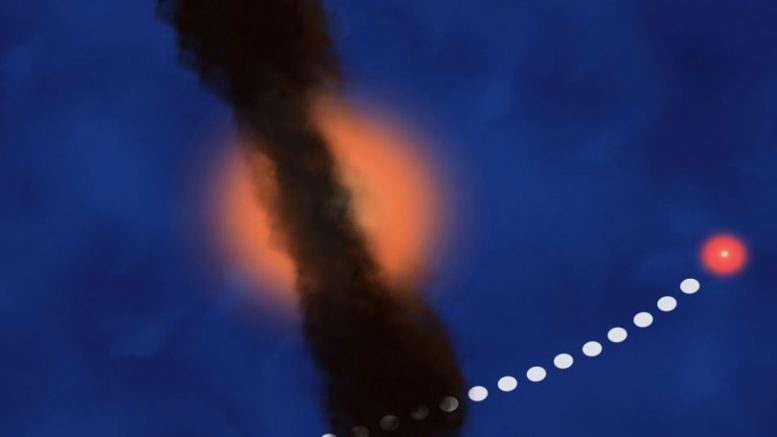
Artist’s impression of a protostellar disc disrupted by a collision. Credit: Galliani, INAF; Hubble Space telescope, NASA; ESO/INAF-VST/OmegaCAM
New research by an international team of astronomers solves the mystery of hot blue stars, which despite their smaller size are especially luminous.
Astronomers have solved a mystery over small, unusually hot blue stars, 10 times hotter than our Sun, that are found in the middle of dense star clusters.
The international team found the so-called blue hook stars throw off their cool outer layers late in life because they are rotating so rapidly, making them more luminous than usual.
“We’ve solved an old puzzle. These stars are only half the mass of our Sun yet we could not explain how they became so luminous,” said team member Dr. Antonino Milone, from ANU Research School of Astronomy and Astrophysics.
“As the star was forming billions of years ago from a disc of gas in the congested center of the star cluster, another star or stars must have collided with the disc and destroyed it.”
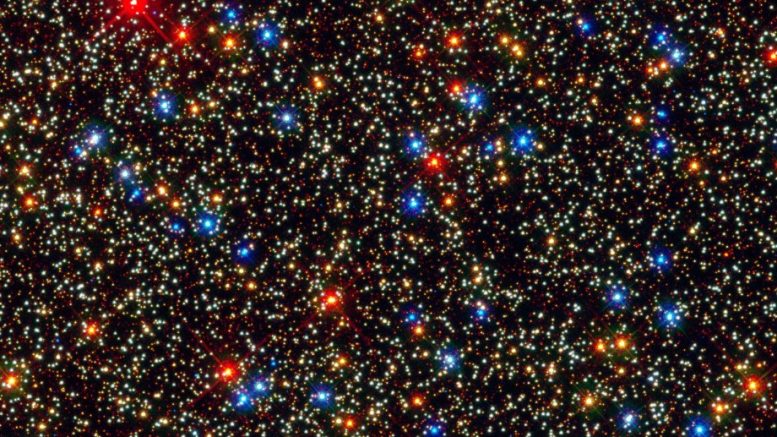
The crowded center of the Omega Centauri globular cluster. Credit: Galliani, INAF; Hubble Space telescope, NASA; ESO/INAF-VST/OmegaCAM
The research, published in Nature, gives new insights into star formation in the early Universe in the crowded centers of clusters. Star clusters are rare environments in the Universe, in which many stars are born at the same time.
The team studied the globular cluster Omega Centauri, the only cluster visible to the naked eye, which contains around 10 million stars in close proximity to one another.
The model shows the formation of stars in clusters do not all form at once, said co-author Dr. Aaron Dotter, also from ANU Research School of Astronomy and Astrophysics.
“These blue stars must form in a second generation of star formation,” he said. “Our new explanation is quite simple, and it hangs together really nicely.”
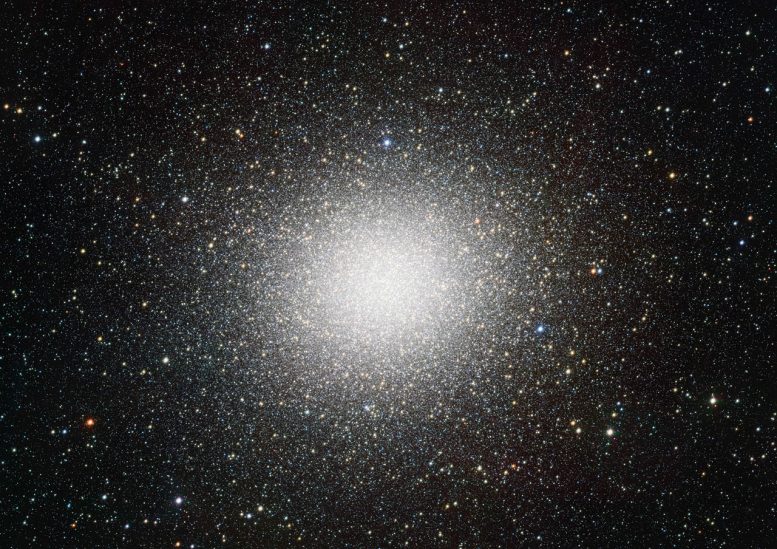
Omega Centauri Globular Cluster. Credit: Galliani, INAF; Hubble Space telescope, NASA; ESO/INAF-VST/OmegaCAM
Usually, the large disc of ionized gas around a newly-forming star locks its rotation through magnetic effects. For the progenitors of blue hook stars, however, an early destruction of its disc allows the stars to spin up as the gas comes together to form a star.
Because its high rotation rate partially balances the inward force of gravity, the star consumes its hydrogen fuel more slowly and evolves differently throughout its life.
The blue hook phase of its life occurs after more than 10 billion years, when the star has consumed nearly all its hydrogen and begins burning the hotter fuel helium. The different evolution processes leave it with a heavier core which burns brighter than typical helium-burning stars.
Reference: “Rapidly rotating second-generation progenitors for the ‘blue hook’ stars of ω Centauri” by Marco Tailo, Francesca D’Antona, Enrico Vesperini, Marcella Di Criscienzo, Paolo Ventura, Antonino P. Milone, Andrea Bellini, Aaron Dotter, Thibaut Decressin, Annibale D’Ercole, Vittoria Caloi and Roberto Capuzzo-Dolcetta, 22 June 2015, Nature.
DOI: 10.1038/Nature14516





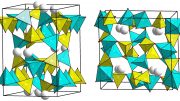

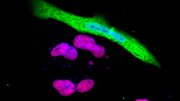
Be the first to comment on "Astronomers Solve Mystery of Unusually Hot Blue Stars"